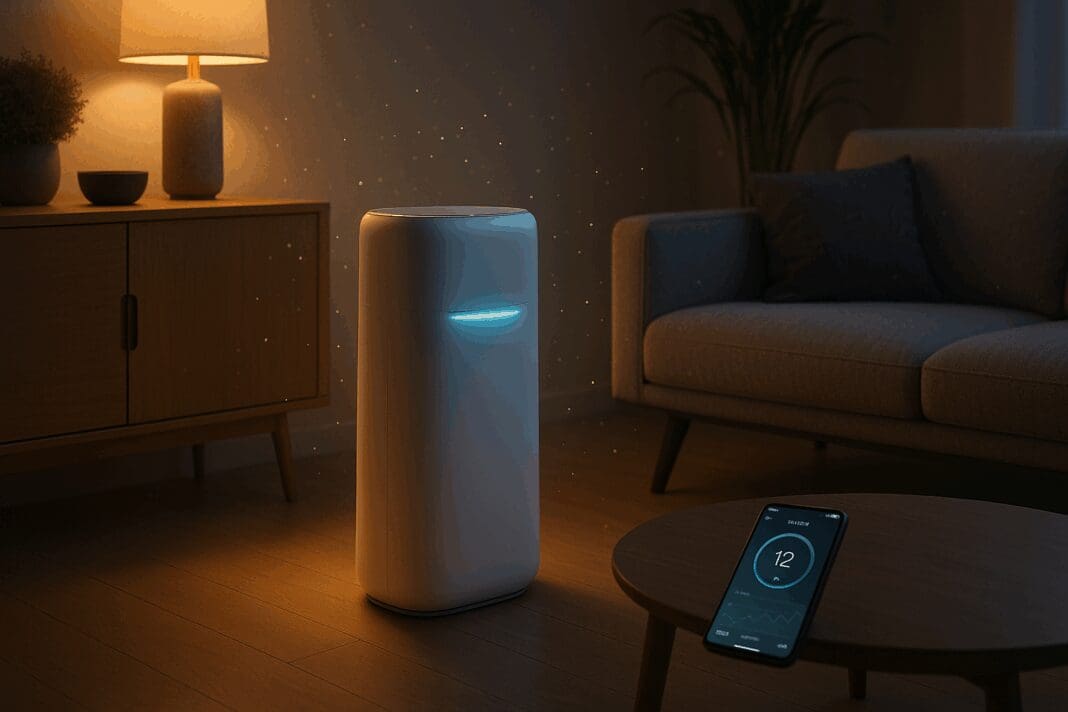In an era where smart homes have evolved from futuristic concepts to practical necessities, homeowners are rethinking the essentials that define modern living. Among the innovations reshaping home environments, the air purifier with auto mode has emerged not merely as a convenience but as a foundational upgrade to any connected home. More than just a standalone device for allergy relief or odor control, a smart air purifier with integrated auto-sensing capabilities brings a fusion of wellness, technology, and environmental intelligence into the household. As families grow increasingly conscious of indoor air quality and the invisible pollutants that surround them, investing in a smart home air purifier becomes a proactive strategy for health, comfort, and sustainable living.
You may also like: Top 7 Powerful Picks for the Best App for Smart Watches in Android
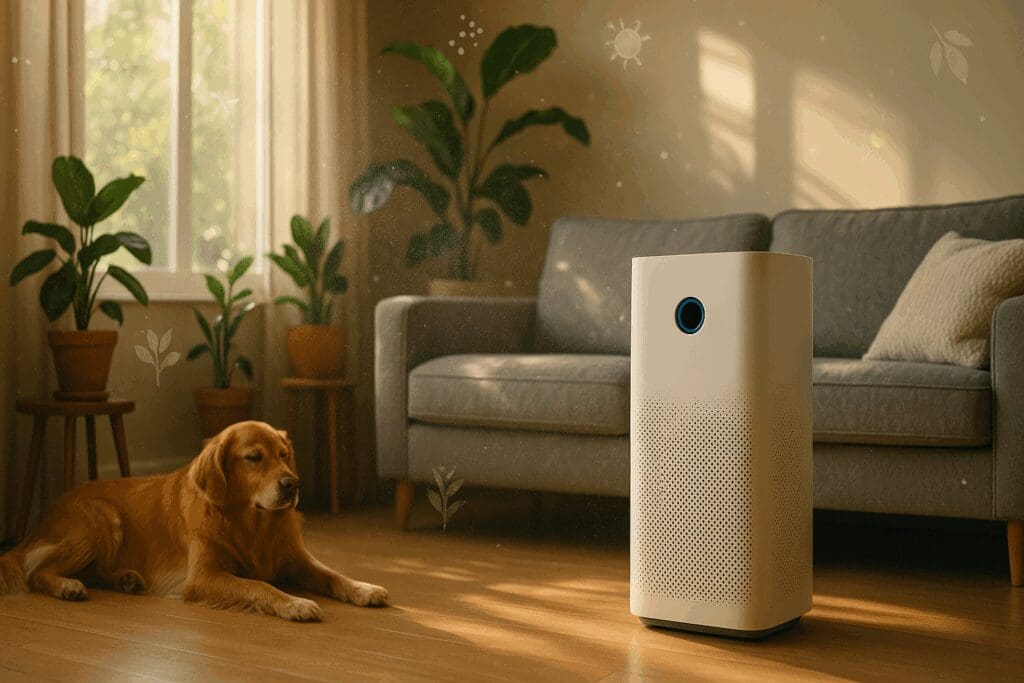
Smart Home Wellness Begins with Clean Air
Modern home wellness is no longer confined to ergonomic furniture or biophilic design. It now includes a strategic focus on air purity—something often taken for granted until symptoms of poor air quality arise. Dust mites, mold spores, pet dander, pollen, and volatile organic compounds (VOCs) are frequently overlooked culprits lurking in even the most well-kept homes. For those with asthma or sensitivities, these airborne threats pose daily risks that cannot be seen, only felt. Traditional purifiers help, but without real-time monitoring or responsiveness, they function in isolation from the dynamic environment they aim to clean.
This is where smart technology bridges the gap. Smart home wellness thrives on devices that not only collect data but act upon it instantly and intelligently. An air purifier with monitor sensors and auto mode capability adapts to changing air conditions automatically, optimizing filtration without the need for manual intervention. The result is a seamless and constant safeguard against pollutants that works in harmony with your life—waking, sleeping, and everything in between. It’s a transformative addition to a wellness-centric home, aligning personal health goals with ambient intelligence.
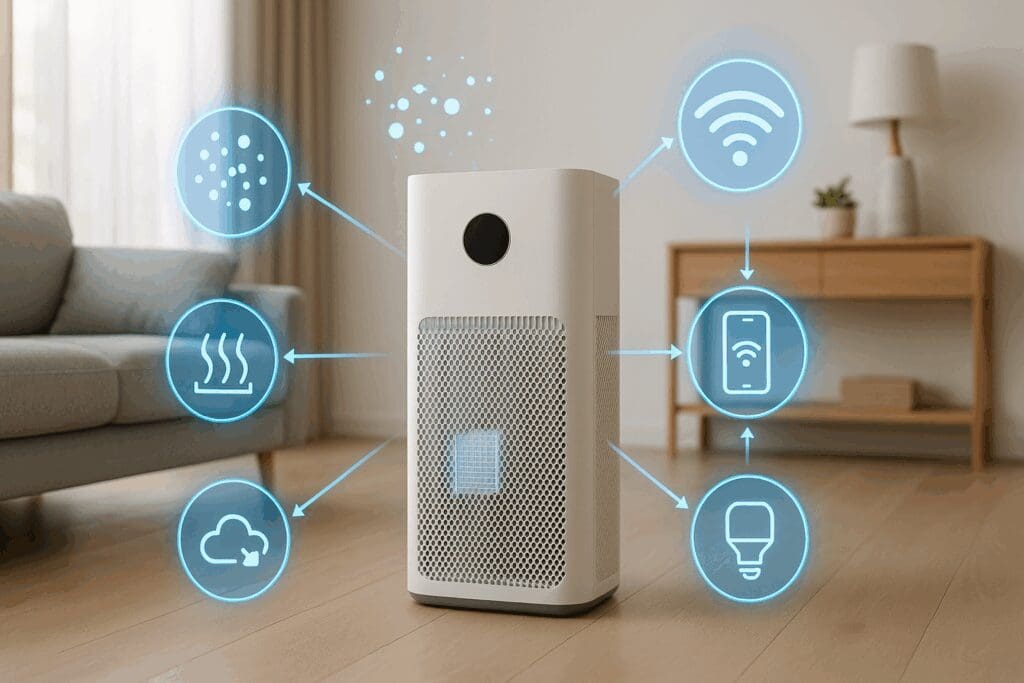
Understanding the Smart HEPA Air Purifier Revolution
At the heart of this revolution is the smart HEPA air purifier, which goes beyond passive filtration to offer active air management. HEPA filters have long been the gold standard for removing at least 99.97% of airborne particles as small as 0.3 microns. When paired with intelligent sensors, app-based controls, and auto mode functionality, they transcend basic utility to become an integral node in the Internet of Things (IoT) ecosystem of your home.
These devices do more than run on a timer—they assess the quality of your indoor air in real-time and respond automatically. For example, when cooking triggers a spike in VOCs or a dog comes in from outside with pollen-coated fur, a smart HEPA air purifier recognizes the shift in airborne contaminants and ramps up its filtration rate without any user prompt. In homes with children, elderly individuals, or immunocompromised residents, this level of responsiveness isn’t just helpful—it’s essential.
Furthermore, many modern smart purifiers are compatible with home automation systems like Alexa, Google Home, and Apple HomeKit. This integration allows for synchronized routines—imagine your HVAC system, humidifier, and smart air purifier working in tandem to create a microclimate precisely tuned to your preferences and needs. These capabilities illustrate that smart air purifiers are not standalone gadgets but collaborative partners in a digitally empowered household.
Why an Air Purifier with Auto Mode Is Essential for Every Room
The benefits of having an air purifier with auto mode extend far beyond the living room or main hallway. Bedrooms, kitchens, nurseries, and even home offices each present unique challenges when it comes to maintaining air quality. In a bedroom, for instance, the accumulation of dust, skin cells, and textile particles can subtly compromise sleep quality over time. Kitchens introduce cooking odors, grease particles, and smoke into the air, which can linger and recirculate throughout the home if not addressed quickly.
Auto mode technology shines in these variable conditions. In a nursery, the moment diaper odor, airborne bacteria, or off-gassing from new furniture is detected, an automated air purifier adjusts its fan speed accordingly—ensuring that infants and toddlers breathe only the cleanest air. In a home office where printer emissions or synthetic furnishings may pose hidden risks, smart air purifiers detect these threats and work to neutralize them with precision.
By removing the guesswork and providing room-specific performance optimization, automated air purifiers make themselves indispensable in every part of the home. They quietly enhance wellness without demanding attention or manual configuration. This always-on, always-adjusting nature represents the ultimate evolution of environmental comfort.
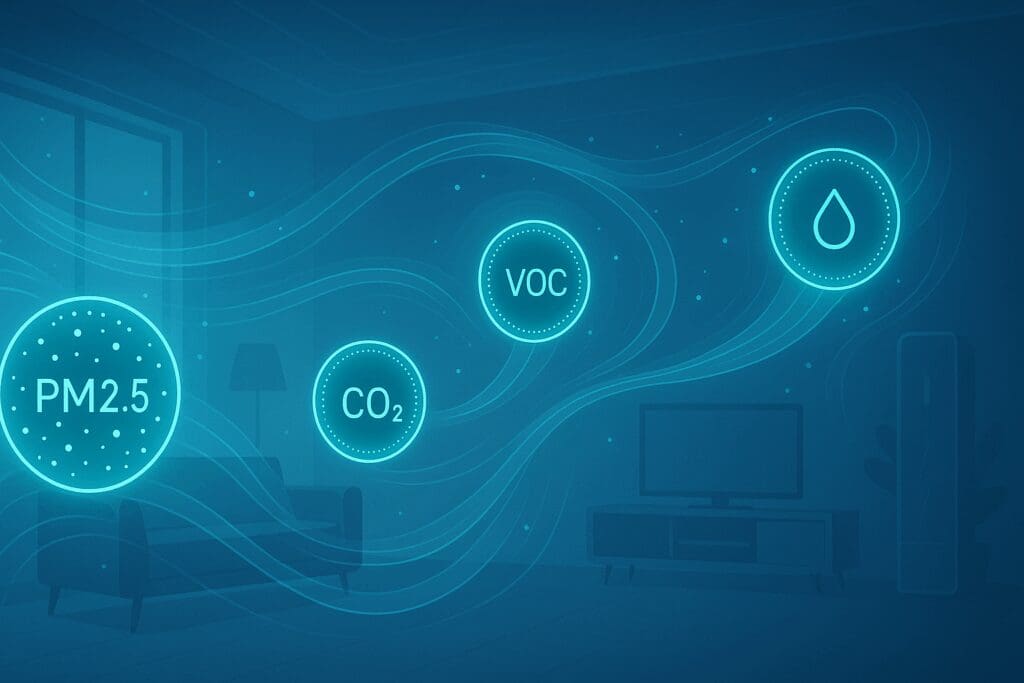
The Science Behind Smart Air Quality Monitoring
To understand the full value of a smart home air purifier, it’s helpful to examine the science behind air quality monitoring. At the core of most automated purifiers is a combination of particle sensors, gas sensors, and sometimes even laser-based technology that can detect particulate matter (PM) down to PM2.5 or smaller. These sensors continuously evaluate air for specific metrics like dust density, chemical presence, humidity, and carbon dioxide levels.
When thresholds are breached, these intelligent systems activate or increase their purification settings. The logic is akin to a thermostat, but for breathable air. Instead of relying on user schedules or estimations, the air purifier works dynamically, based on environmental data collected minute-by-minute. Over time, some models also learn from patterns in your daily life—adjusting for when windows are typically opened, when the oven is used, or when foot traffic increases.
What sets a smart air purifier with monitor functionality apart is its ability to give homeowners visibility into these trends. Many come with companion apps that provide detailed analytics, historical data, and real-time alerts. Users can track which activities correlate with air quality changes and make smarter decisions about home habits. For example, discovering that a new rug emits VOCs could lead to smarter purchasing decisions in the future. This feedback loop between data, action, and lifestyle creates a healthier, more conscious home environment.
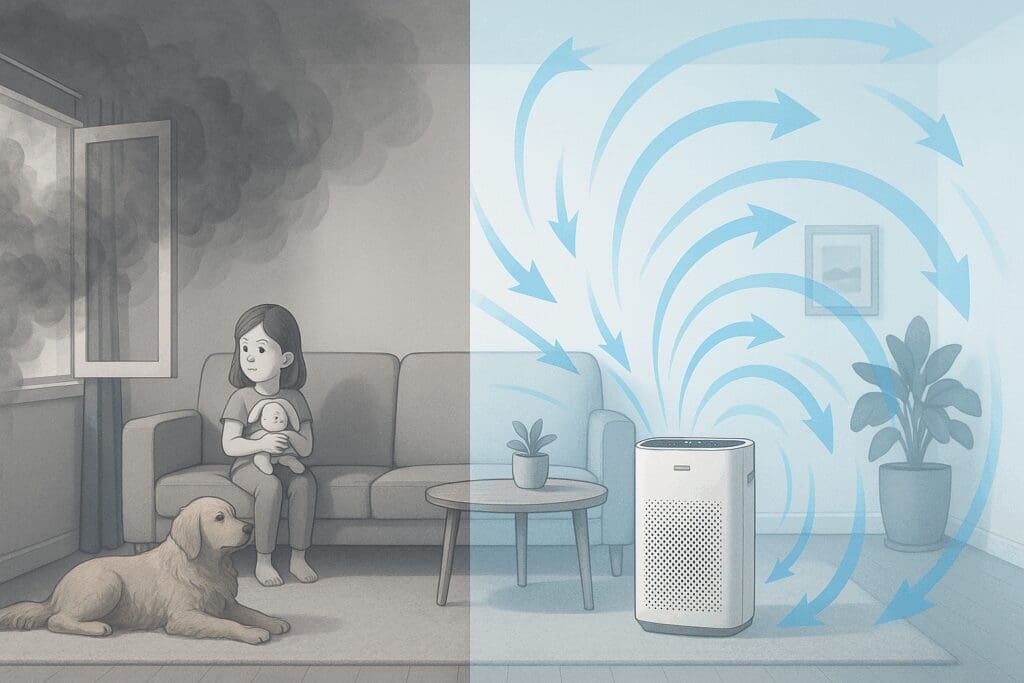
Real-Time Protection with an Automated Air Purifier
One of the most powerful features of an automated air purifier is its ability to provide immediate, real-time protection in dynamic scenarios. Whether it’s wildfire smoke infiltrating urban apartments, pet dander stirred up by vacuuming, or sudden spikes in indoor humidity causing mold to release spores, time is of the essence. A delay of even 20–30 minutes in purification can have tangible effects on respiratory health, especially for individuals with allergies or asthma.
Traditional purifiers that rely on timers or fixed fan settings may run inefficiently or too late to address these spikes. By contrast, an automated air purifier responds instantly, recalibrating filtration speeds or even switching purification modes. Some high-end models also feature multi-stage filtration systems, including activated carbon and UV-C light, which can neutralize odors, bacteria, and viruses in addition to particulate matter.
Moreover, these units help manage energy consumption intelligently. Rather than running at maximum capacity all day, they only activate higher power modes when necessary, reducing both electricity usage and filter wear. This balance of energy efficiency and protective responsiveness makes automated purifiers uniquely suited for modern homes where both sustainability and health are priorities.
Evaluating the Best Smart Air Purifier Review Criteria
Given the rising demand for cleaner indoor environments, it’s no surprise that smart air purifier review metrics have become more nuanced and informed. It’s no longer sufficient to measure only airflow rate or filter lifespan. In today’s market, buyers look for a holistic picture: integration with smart ecosystems, the precision of air quality sensors, app usability, noise levels, and even aesthetic design all matter.
One increasingly valuable review criterion is sensor sensitivity. A truly intelligent air purifier doesn’t just notice when a window is open—it distinguishes between seasonal pollen and diesel fumes from nearby traffic. It doesn’t merely react to changes in humidity; it evaluates how those changes correlate with particle count to determine the source of a problem. Reviewers and experts now place heavy emphasis on how well a device reads and reacts to these multifactorial conditions.
Another emerging point of differentiation in smart air purifier reviews is long-term usability. Do app updates remain compatible with new smartphone OS versions? Does the manufacturer offer filter subscriptions or sustainable disposal methods? What about Wi-Fi security and data privacy? As with all smart home technologies, longevity and support infrastructure are key indicators of quality. A well-reviewed purifier is one that maintains relevance and reliability even as your smart home ecosystem evolves.

How a Smart Air Purifier with Monitor Improves Behavioral Awareness
Beyond the clear health benefits, using a smart air purifier with monitor capabilities also fosters deeper behavioral awareness about indoor pollution sources. Most people are surprised to learn just how often daily activities compromise air quality—from lighting scented candles to using specific cleaning sprays. Smart purifiers that visualize air quality in real-time educate homeowners and renters alike on what invisible contaminants they’re exposed to and when.
These insights lead to lasting behavioral change. For instance, someone might switch to low-VOC paint after seeing the prolonged effects of standard wall coatings on PM2.5 levels. Others might relocate litter boxes, adjust HVAC filters more regularly, or reduce the use of synthetic air fresheners after seeing data that links these elements to air pollution spikes. By making the invisible visible, these purifiers turn passive habits into active choices rooted in data and self-awareness.
This shift toward evidence-driven living isn’t limited to health-conscious households. Even technology enthusiasts who may not initially prioritize air purity find themselves captivated by the layered feedback smart air purifiers provide. Like fitness trackers for your home, these devices motivate incremental improvements that, over time, result in vastly better indoor environments. For families, this can translate into fewer sick days and more restful nights—benefits that compound well beyond the screen of a smartphone app.
The Role of Air Purifiers in Allergy and Asthma Management
For the millions who suffer from seasonal allergies, dust sensitivities, or chronic asthma, a smart home air purifier can be life-changing. Unlike portable purifiers that run at static speeds, smart devices offer tailored responses that match allergen exposure in real-time. When pollen counts rise, they amplify filtration; when indoor humidity increases, they target potential mold activity. These functions eliminate the need for guesswork and constant adjustment, which is often required by traditional units.
Medical professionals increasingly recommend smart HEPA air purifiers as part of an integrated care plan for respiratory issues. These devices complement pharmaceutical interventions by minimizing environmental triggers that can render medications less effective or exacerbate symptoms. For example, a parent managing a child’s asthma may find that smart purifiers allow for longer stretches between flare-ups or reduced reliance on corticosteroids.
These systems also benefit multi-generational households. Older adults, whose immune systems may be more vulnerable to airborne bacteria or mold, receive an added layer of protection. Infants and toddlers, still developing immune defenses, likewise benefit from breathing consistently purified air. In this context, an air purifier with auto mode transitions from a luxury device to a healthcare ally, bridging the gap between smart home technology and preventive medicine.
Redefining Convenience: Daily Life with an Air Purifier with Auto Mode
Daily convenience is often what separates a good smart device from a great one. An air purifier with auto mode exemplifies this by removing the burden of constant management from the user. Rather than requiring manual adjustment based on air quality readings, time of day, or guesswork, the purifier autonomously adjusts fan speed and purification intensity in response to real-time data. This automation enhances quality of life for everyone in the home—not just those suffering from allergies or sensitivities.
Consider the difference this makes in a practical routine. In the morning, as a household begins to stir, cooking breakfast, brewing coffee, and opening doors can all introduce new particulates into the air. A smart air purifier recognizes these environmental changes and ramps up filtration to mitigate exposure. By mid-morning, when activity decreases and air quality stabilizes, it returns to a quieter, energy-efficient setting. At night, it may lower fan speed further to maintain silent operation while still ensuring air purity—especially beneficial in bedrooms and nurseries.
This type of automated intelligence means that clean air is no longer something that requires vigilance. It’s simply there—an invisible yet constant presence. The peace of mind this brings is invaluable. Whether you’re on a Zoom call in your home office, hosting guests in your living room, or putting your baby to bed, an automated purifier is already working behind the scenes to ensure the environment supports rather than detracts from your activities.
Designing Wellness into the Aesthetics of Smart Living
Smart devices have evolved not only in functionality but also in form, and the smart home air purifier is no exception. In the early days, air purifiers were bulky, noisy, and visually intrusive. Today’s smart purifiers are intentionally designed to blend seamlessly into home décor, functioning as both wellness tools and aesthetic additions. With sleek exteriors, whisper-quiet motors, and intelligent displays that softly glow rather than blare, they complement modern interior design rather than disrupt it.
This evolution is essential for tech-savvy homeowners who want their gadgets to be as visually pleasing as they are effective. In open-concept homes or minimalist apartments, every device must earn its place—not only in terms of utility but also style. The best smart HEPA air purifiers strike this balance, offering clean lines, matte finishes, and compact builds that integrate easily into bookshelves, under tables, or on credenzas.
Design goes beyond appearance, however. Touch-sensitive controls, haptic feedback, and unobtrusive indicator lights are signs of a well-designed user interface. Many smart purifiers are built with modular components for easy maintenance and filter replacement—ensuring that upkeep doesn’t require technical expertise. This thoughtful design language, marrying aesthetics with usability, demonstrates that wellness technology can and should harmonize with the rhythms of daily life.
The Environmental Case for a Smart Home Air Purifier
Sustainability has become a key pillar of modern living, and smart devices are increasingly evaluated not only by what they do but how they do it. An air purifier with auto mode supports environmentally conscious living by optimizing energy use and extending filter life through precision-based operation. Rather than running at high capacity 24/7, the device conserves power by responding only when pollutants are present—ensuring that energy isn’t wasted on unnecessary purification cycles.
Moreover, many smart purifiers now come with washable pre-filters and recyclable filter components. This reduces landfill waste and supports a circular economy approach. Some manufacturers even offer subscription-based filter recycling programs, allowing users to return used filters for responsible processing. These practices reduce the environmental footprint of air purification—a key concern in a world increasingly aware of the ecological cost of consumer electronics.
The smart home air purifier also contributes indirectly to broader environmental goals. By reducing dependence on chemical air fresheners, aerosol sprays, and scented candles—common but pollution-prone methods for masking odors—it helps minimize indoor sources of VOCs. This not only improves indoor air quality but also limits the emissions associated with manufacturing and disposing of synthetic fragrance products. In this way, the smart air purifier becomes not just a tool for personal health, but a step toward planetary health.
Air Purifier with Auto Mode as a Key Node in the IoT Ecosystem
An increasingly connected home demands devices that not only perform isolated tasks but also communicate with other systems. An air purifier with auto mode is uniquely positioned to serve as a sensor hub within the broader Internet of Things (IoT) framework. When integrated with platforms like Samsung SmartThings, Apple HomeKit, or Amazon Alexa, a smart air purifier can initiate or respond to routines that optimize your indoor climate across the board.
Imagine a scenario where your air purifier senses a spike in particulate matter and signals the smart thermostat to adjust HVAC settings accordingly. Or it detects high humidity and notifies your dehumidifier to engage. In a more advanced setup, an increase in CO₂ levels might trigger your home automation system to crack open a smart window or start an air exchanger. These micro-interactions, invisible to the user, result in a living space that feels effortlessly comfortable and healthy.
Integration is also useful for accessibility. Elderly or mobility-challenged individuals can operate their smart air purifier with voice commands or through scheduled routines, avoiding the need to physically interact with the device. Notifications can be sent to caregivers or family members if air quality dips below a preset threshold, enabling remote monitoring and peace of mind. This interconnectedness transforms a smart air purifier from a standalone device into an essential member of your home’s digital support system.
Choosing the Right Smart Air Purifier Review Metrics
Not all purifiers are created equal, and selecting the right model requires a discerning look at smart air purifier review metrics. While customer ratings offer a useful snapshot, deeper technical reviews can help illuminate differences in sensor accuracy, filter quality, app reliability, and firmware consistency. For example, some models boast multiple sensors for PM2.5, VOCs, and CO₂—while others may offer only basic particle detection. Understanding these distinctions helps ensure you’re not overpaying for features you won’t use or underestimating your air quality challenges.
Another critical metric is noise level at various speeds. Some automated air purifiers operate whisper-quiet on low settings but emit disruptive noise during high-power filtration cycles. Reviews that measure decibels in both sleep and turbo modes provide valuable insight, especially for use in bedrooms or shared workspaces. Likewise, app interface usability is often a make-or-break factor. A clunky app with poor connectivity or unintuitive controls can quickly turn a smart device into a frustrating one.
Finally, look for reviews that evaluate long-term reliability. Does the purifier maintain performance after a year of use? Are filters easy to find and reasonably priced? How responsive is the manufacturer’s customer support? These are not trivial concerns—especially for a device that becomes a fixture in your wellness routine. Thoughtful analysis of these criteria will empower you to make a selection that aligns with both your health needs and lifestyle expectations.
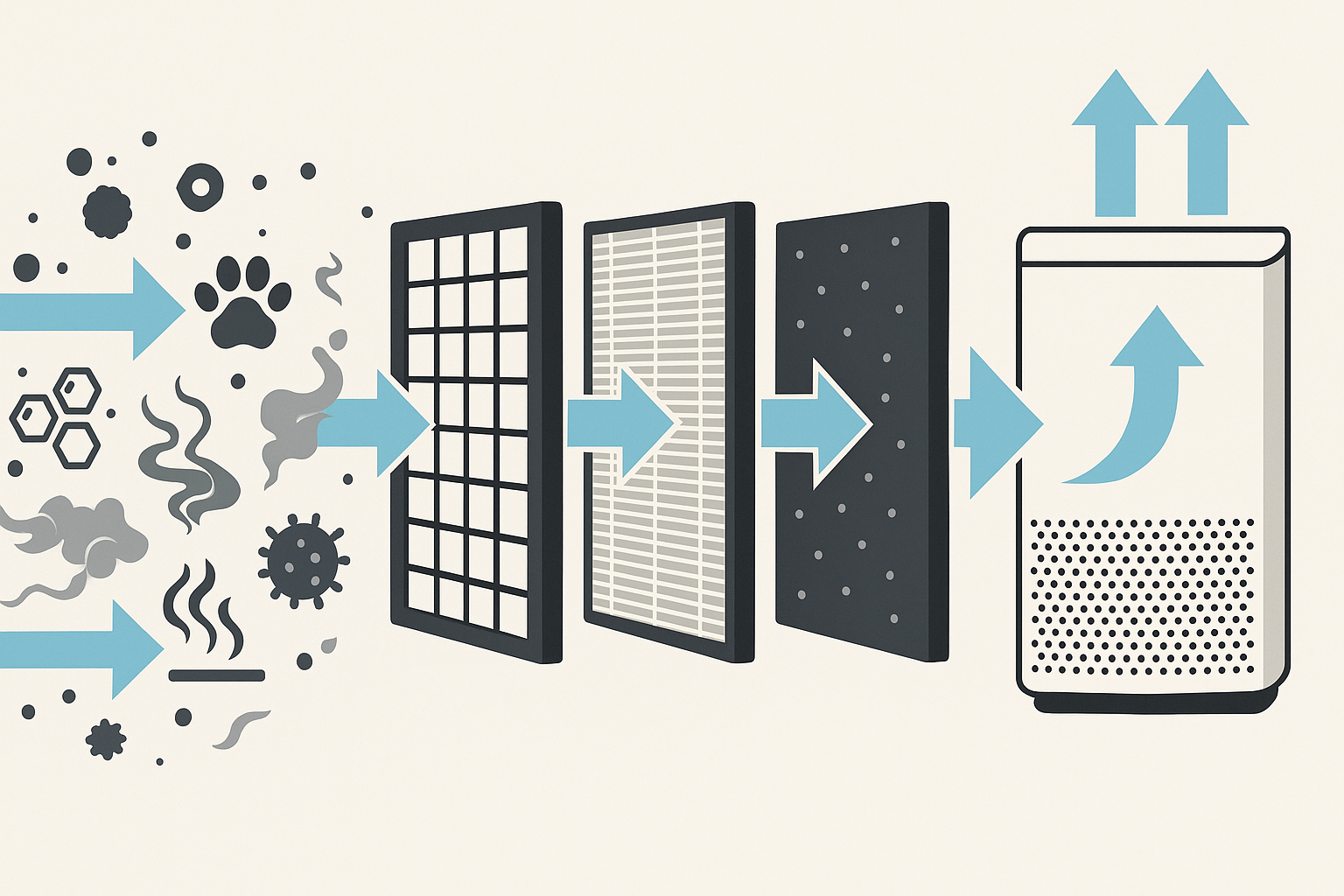
Smart HEPA Air Purifier Efficiency in Multi-Pollutant Scenarios
Indoor air pollution is rarely caused by a single source. More often, it’s a complex mixture of particles, gases, humidity, and biological elements that interact in unpredictable ways. A smart HEPA air purifier equipped with multi-stage filtration systems can address this complexity more effectively than simpler models. HEPA filters capture dust, dander, and pollen, while activated carbon absorbs odors and chemicals. Advanced units may include UV-C light or ionization to tackle bacteria and viruses.
This layered approach is especially useful in multi-pollutant environments like urban apartments, older homes with lead paint or asbestos remnants, or rural homes with wood-burning stoves. By analyzing multiple variables simultaneously, the smart air purifier adapts its operation to match the unique profile of each room. It doesn’t just react to what’s in the air—it learns from it over time, refining its algorithm to better anticipate future conditions.
Furthermore, in homes with pets, plants, and varied cooking routines, pollutant levels can fluctuate significantly throughout the day. A smart HEPA purifier with auto mode handles these changes with agility, ensuring that the right type of filtration is applied at the right time. This targeted adaptability sets it apart from conventional units and makes it an essential component in managing today’s complex indoor environments.
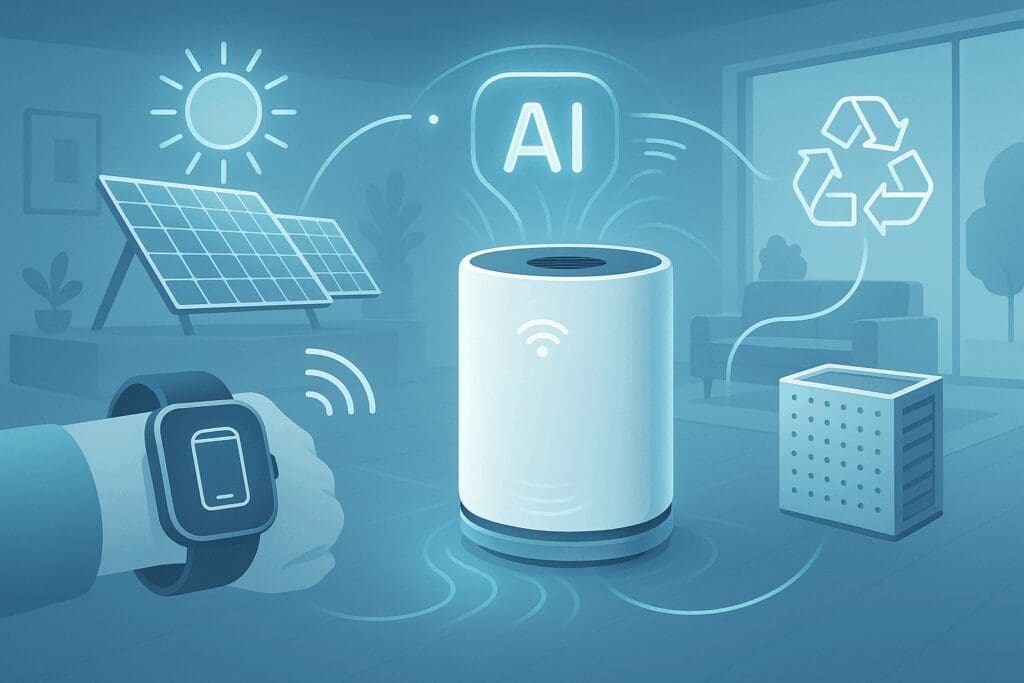
Future Trends in Automated Air Purifier Technology
The future of the automated air purifier is being shaped by exciting advancements in sensor technology, AI integration, and sustainable materials. Next-generation models are expected to include environmental learning capabilities that not only respond to air quality changes but predict them. By analyzing patterns—such as the correlation between outdoor pollen reports and indoor particle counts—AI-enabled purifiers will preemptively adjust filtration before contaminants become an issue.
Additionally, we can expect to see more integration with wearable health tech. Imagine a scenario where your smartwatch detects elevated heart rate variability (a possible response to allergens) and signals your purifier to increase activity. This kind of personalized environmental management is on the horizon, bridging the gap between personal health monitoring and ambient wellness support.
Sustainability will also play a bigger role in product development. Manufacturers are exploring biodegradable filter media, solar-powered units, and blockchain-based filter authentication systems to combat counterfeits. As consumers become more eco-aware and technologically demanding, the automated air purifier will evolve into a hybrid of environmental sentinel, health guardian, and energy-efficient marvel. These trends underscore the purifier’s central role in shaping the future of connected, wellness-optimized living spaces.
FAQ: Expert Insights into Choosing the Right Air Purifier with Auto Mode for Modern Living
1. How does an air purifier with auto mode adjust to changing environmental conditions in real-time?
An air purifier with auto mode relies on integrated sensors—typically for particulate matter, VOCs, and sometimes humidity—to gauge indoor air quality continuously. These sensors detect subtle environmental shifts, such as a rise in pollen, pet dander, or smoke, and automatically adjust fan speeds for optimal filtration. Unlike manual settings that rely on user estimation, auto mode allows for precision-based adjustments, saving energy when pollution is low and maximizing filtration when it’s high. This is especially beneficial in homes with fluctuating contaminants, like during cooking or allergy seasons. In practice, it enables a “set it and forget it” lifestyle, where users enjoy cleaner air without constant monitoring.
2. What should I consider when evaluating a smart home air purifier beyond smartphone compatibility?
A smart home air purifier should integrate seamlessly into a broader smart ecosystem, including voice control (Alexa, Google Assistant, or Siri), automation routines, and multi-room syncing. Advanced models allow data logging and reporting over time, helping users identify pollutant trends specific to their living environments. Some smart home air purifier models can be programmed to activate based on geo-fencing, turning on when you approach home, or syncing with weather alerts for high pollen days. The value of a smart purifier lies not just in app control, but in its ability to proactively protect your space using data-driven intelligence. Look for compatibility with IFTTT and home automation hubs to maximize its utility.
3. In what scenarios does a smart HEPA air purifier outperform traditional HEPA-only systems?
A smart HEPA air purifier leverages intelligent sensing and algorithmic control to maintain consistently clean air, even during sleep or when no one is home. Traditional HEPA purifiers may offer excellent filtration but require manual operation, leading to periods of underperformance or inefficiency. In contrast, smart HEPA models dynamically adapt to changes such as increased pet shedding or urban pollution surges, making them ideal for families, allergy sufferers, or city dwellers. Moreover, smart alerts notify users when filters need replacing—removing the guesswork and extending device longevity. This proactive approach translates into both better health outcomes and long-term cost savings.
4. How does a smart air purifier review help identify potential long-term maintenance needs?
A well-researched smart air purifier review often reveals details that manufacturers gloss over, such as the frequency of sensor calibration or app glitches. These reviews typically include long-term testing and feedback on real-world filter lifespan, energy consumption under various settings, and firmware reliability. By consulting these reviews, buyers can better understand the total cost of ownership—not just upfront price. For instance, a model that requires sensor recalibration every three months may be less ideal than one that self-calibrates. In-depth reviews also help you avoid purifiers with discontinued apps or poor customer service records.
5. Why is an air purifier with monitor essential in spaces with children, elderly, or chronically ill residents?
An air purifier with monitor provides continuous visual feedback, often using color-coded displays or digital readouts, to show the quality of the air in real-time. For vulnerable populations—like children, seniors, or people with asthma—this feature is invaluable in taking timely action against invisible pollutants. For example, a spike in PM2.5 levels could indicate a need to close windows or remove a new chemical product from the room. The monitor empowers users to correlate daily activities with air quality changes, promoting better habits and healthier indoor environments. Furthermore, this visibility increases compliance with regular filter maintenance, as users are more aware of purifier performance.
6. What role does machine learning play in the performance of an automated air purifier?
Machine learning in an automated air purifier allows the device to become more responsive over time, learning from repeated environmental patterns and user behavior. For example, if pollution levels routinely rise at 6 p.m. during cooking, the purifier can begin preemptive filtering before contaminants spike. Some high-end automated air purifier models even detect the types of pollutants most common in your home and prioritize filters accordingly. This evolution from reactive to predictive performance is a significant leap in air purification, enhancing both health outcomes and energy efficiency. The more consistently it’s used, the smarter and more efficient the device becomes.
7. How can an air purifier with auto mode contribute to energy savings in eco-conscious homes?
An air purifier with auto mode adjusts its power usage based on the detected level of airborne pollutants, preventing unnecessary energy drain during low-contamination periods. This is particularly useful in green homes or among users aiming to reduce their carbon footprint. For example, rather than running at full capacity all day, an auto-mode purifier might operate at low speed for hours and ramp up only when necessary, cutting down on electricity costs. Over time, the savings on utility bills can offset the premium cost of the auto mode feature. It also aligns with the goals of energy-efficient smart homes that dynamically optimize appliance use.
8. What emerging technologies are being integrated into smart HEPA air purifiers today?
Today’s smart HEPA air purifiers are evolving with advanced tech like laser-based air quality sensors, AI-powered pollution forecasting, and blockchain-based filter tracking systems for authenticity verification. Some are being integrated with wellness platforms that track sleep and breathing quality, correlating purifier usage with biometric data. Voice AI interfaces are becoming more nuanced, allowing users to ask their smart HEPA air purifier questions like “How clean is my air now?” or “Did pollution spike last night?” We’re also seeing developments in self-cleaning pre-filters and antimicrobial coatings that extend filter life and improve hygiene. These innovations signal a shift from reactive devices to health-focused smart assistants.
9. What advantages does a dual-sensor air purifier with monitor offer over single-sensor models?
A dual-sensor air purifier with monitor typically tracks both particulate matter and gases such as VOCs, offering a more complete picture of indoor air quality. Single-sensor models may only alert you to smoke or pollen but miss chemical cleaners or off-gassing from furniture. This dual detection capability enhances the auto mode’s intelligence, allowing for more nuanced adjustments that consider multiple types of pollutants. In a home with new paint, for instance, the VOC sensor would activate filtration even if dust levels are low. For users concerned with comprehensive purification—especially those living in urban areas or new builds—this dual-sensor setup is an invaluable upgrade.
10. How does a smart air purifier review help consumers align their choice with lifestyle needs?
A comprehensive smart air purifier review often highlights lifestyle compatibility—such as whether a unit is better for pet owners, city apartments, or open-concept homes. These reviews discuss noise levels during sleep mode, mobile app usability during travel, and performance in real-world scenarios like wildfire season or allergy spikes. Some smart air purifier review sites even include anecdotal experiences from users with children, pets, or specific health concerns, offering relatable insights. This real-world context helps buyers avoid overbuying features they won’t use or underestimating the demands of their environment. In essence, these reviews transform technical specs into human-centric decisions.
Conclusion: Breathing Smarter in a Connected World with an Air Purifier with Auto Mode
As smart home ecosystems grow more refined, the air purifier with auto mode stands out not just as a wellness device but as an essential element of intelligent living. It blends seamlessly into daily routines, improves respiratory health, supports sustainable choices, and adapts in real-time to the evolving conditions of your indoor environment. Whether you’re managing chronic allergies, seeking peace of mind during wildfire season, or simply wanting a cleaner space for your family, the automated air purifier delivers invisible yet profound benefits that accumulate with every breath you take.
Its value transcends convenience. This device is a commitment to a more mindful lifestyle—one that leverages technology to reduce health risks, minimize environmental impact, and create a sanctuary where well-being is quietly prioritized. With its real-time responsiveness, cross-device integration, and data-driven insights, the smart air purifier isn’t just reacting to pollution—it’s helping to prevent it. It’s not simply cleaning your air—it’s elevating your quality of life.
As we look ahead to the continued expansion of smart home wellness and interconnected living, the role of the smart HEPA air purifier, the automated air purifier, and the smart air purifier with monitor will only grow in significance. This isn’t a passing trend—it’s the new standard for homes that aspire to be as intelligent as they are nurturing. And in a world where health, technology, and sustainability increasingly intersect, few upgrades offer as much holistic value as the decision to breathe smarter, starting with an air purifier that thinks for itself.
Further Reading:
Best Smart Air Purifiers – Tested, Reviewed and Ranked
Why Auto Mode on Xiaomi, Philips, and Levoit Air Purifiers is a Mistake

